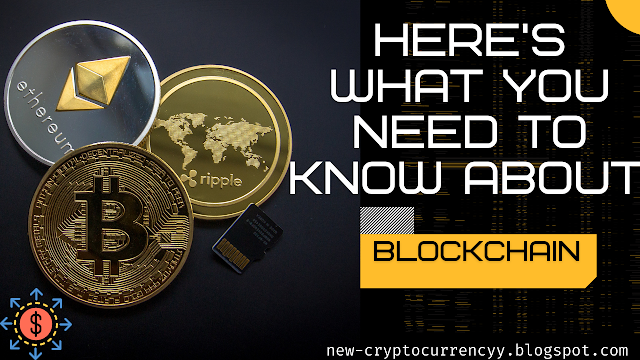What is the difference between blockchain and cryptocurrency?
A cryptocurrency, at its most basic level, is a digital asset that uses computer code and blockchain technology to operate independently of a central entity — whether it is a person, company, central bank, or government — to control the system.
A blockchain is a public ledger that records bitcoin transactions. This transaction ledger is kept on multiple computers connected by a dispersed network. In bitcoin protocols, transactions are aggregated into blocks, which are then linked together to create a historical record of everything that has transpired on the blockchain.
Bitcoin, the first cryptocurrency, was founded to serve as a payment system for the internet world. Faster, cheaper, unaffected by censorship, and independent of any government
There are thousands of cryptocurrencies available now. These are still payment systems, but they've also been designed for additional uses including lending and borrowing, as well as digital storage. One of the most common applications for this technology is speculation, which involves buying in the hopes that the price will rise and the holders will profit.
Cryptocurrency features
The vision behind cryptocurrency is one of a peer-to-peer electronic currency system that is not controlled by a central authority and therefore, is fast, cheap, and invulnerable to censorship (for instance, PayPal blocking gun sales) and other forms of corruption or control.
While the definition is fluid, several features typically make up a crypto asset:
Cryptography is where the term "crypto" originates. Cryptography is used in a cryptocurrency (or crypto for short). Cryptography is a technique for safeguarding information or communications. Public key cryptography is used by cryptocurrencies. There is a public key in public key cryptography systems that may be shared with others; in cryptocurrencies, this is the key you share with others so they can send you cryptocurrency. You also have a private key that you don't share with anyone. Consider the private key to be a password. It protects your cryptocurrency assets and is used to sign transactions you send to others.
Transparency is at the heart of the crypto ethos. Much of the code that these protocols are based on is open source, meaning it can be freely redistributed and modified. Furthermore, every crypto transaction is timestamped on the blockchain, resulting in a public provenance or chronology of asset ownership or custody.
Incentives: Cryptocurrency protocols include game theory components to ensure that all system users act in a way that maintains the system running. Bitcoin miners, for example, must employ computer processing power to verify transaction blocks. When miners verify a block of transactions, newly generated coins are immediately handed to them as a reward for their efforts. Miners are rewarded for continuing to devote computing resources to transaction verification in this fashion.
Coins, tokens, and crypto-assets are all examples of digital assets.
Many terms in the crypto world are interchangeable, which makes the dialogue unclear for newbies. However, there are three types of cryptography:
Crypto assets/digital assets: This is a blanket word for all of the unique assets that have emerged from the blockchain revolution and make use of encryption. This category includes both cryptocurrency and crypto tokens.
Cryptocurrency: Cryptocurrency, often known as cryptocurrencies, is a type of digital asset that is native to blockchains. The native cryptocurrency of the Bitcoin blockchain is bitcoin (BTC), whereas the native cryptocurrency of the Ethereum blockchain is ether (ETH). These coins are used to pay transaction fees as well as to reward miners, or individuals that verify transactions.
Tokenized crypto assets: Tokenized crypto assets are crypto assets that do not have their own blockchain. Crypto tokens are built on top of a blockchain. Although Ethereum is the most popular blockchain for creating tokens, other blockchains can also be used. The painting NFT from Beeple, for example, was constructed on top of the Ethereum blockchain and sold for a stunning $69 million.
Why should you be concerned about cryptocurrency?
The ecosystem surrounding bitcoin and blockchain technology has grown into a billion-dollar industry since its inception in 2009, with cryptocurrencies having a total market valuation of over $1 trillion.
Technology has pushed financial services companies and other businesses to adapt their processes to better reflect people's expectations for transacting and interacting online, both internally and publicly. The speed and low cost of cross-border crypto transactions, for example, has caused many to reconsider the remittance sector and other payment networks, such as Western Union.
One of the purposes of cryptocurrencies, as an open system, is to provide access to financial services tools to many people who are unable to access the traditional banking system. And the industry promotes individual self-sovereignty or the ability for people to maintain ownership over their data, whether it's personal information or money.
Even yet, there are risks when dealing with cryptocurrency and unregulated financial systems, such as hackers and lost wallet passwords, which can result in consumers being locked out of their accounts and/or losing their money. Keep in mind that these accounts are not FDIC-insured.
Individuals and organizations can avoid laws, prohibitions, and regulatory supervision by using cryptocurrency because it is not controlled by the government. After the US government persuaded the card networks, Visa and Mastercard, to stop processing transactions to WikiLeaks, bitcoin was utilized to make donations to the group. Since the Venezuelan government has inflated bolivars to near worthlessness, some Venezuelans have converted bolivars to bitcoin as a means of storing value. Cryptocurrencies, on the other hand, have facilitated illegal operations such as money laundering.
Before you invest in cryptocurrencies, there are a few things you should check for.
Although there is no single silver bullet for discovering the next big thing, there are various techniques to examine crypto assets and initiatives. While investigating cryptocurrencies, keep the following points in mind:
- Data: The industry generates a large amount of data because it is based on transparency. The total value of all the coins or tokens that have been created, known as market capitalization, is a key statistic in the space. On services like CoinGecko and CoinMarketCap, you can compare cryptocurrency data.
- Case studies: It's useful to know how many active users a network has and what they're doing on the network. Is the initiative addressing a real issue? How widespread will a protocol's adoption be, both among individuals and businesses?
- Separately, protocols with a strong developer ecosystem are generally seen as superior projects, as this indicates that the codebase is being maintained and improved by a large number of individuals.
- Investigating the people behind a cryptocurrency project can be beneficial, but it can also be difficult. Because the crypto ecosystem has a strong privacy culture, many users, developers, and even the C-suite prefer to remain anonymous, using simply a pseudonym. And this does not always imply that the projects are untrustworthy.
Remember that cryptocurrencies and crypto tokens are a relatively young investment sector, having only existed for a little over a decade. These digital assets are created using cutting-edge, experimental technology, and the industry is governed by a patchwork of regulations that are constantly changing.
As a result, crypto assets are considered a riskier investment than traditional assets such as equities and bonds.




Comments
Post a Comment